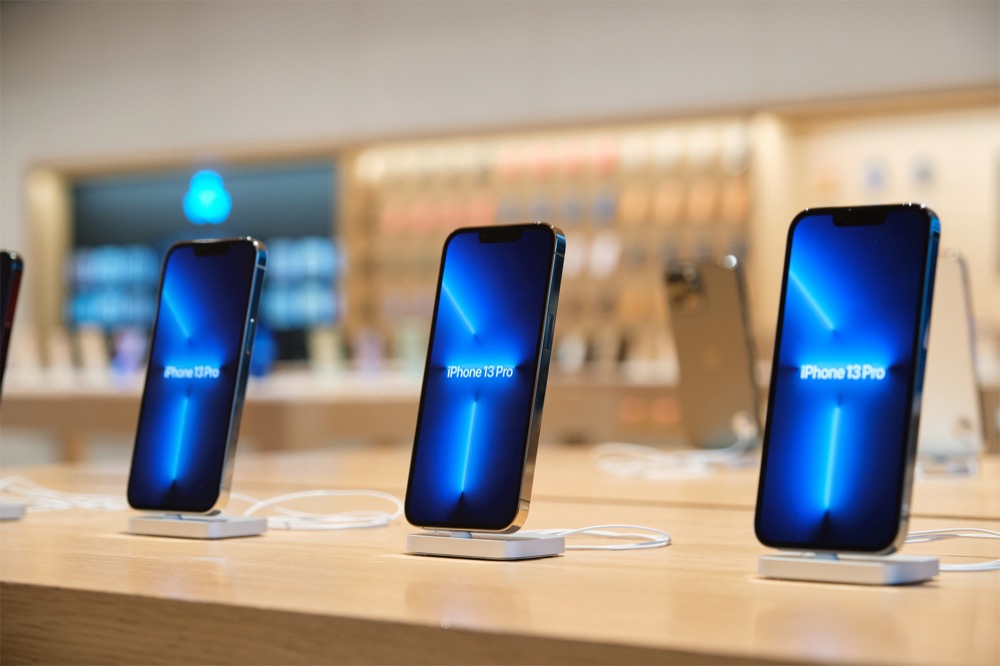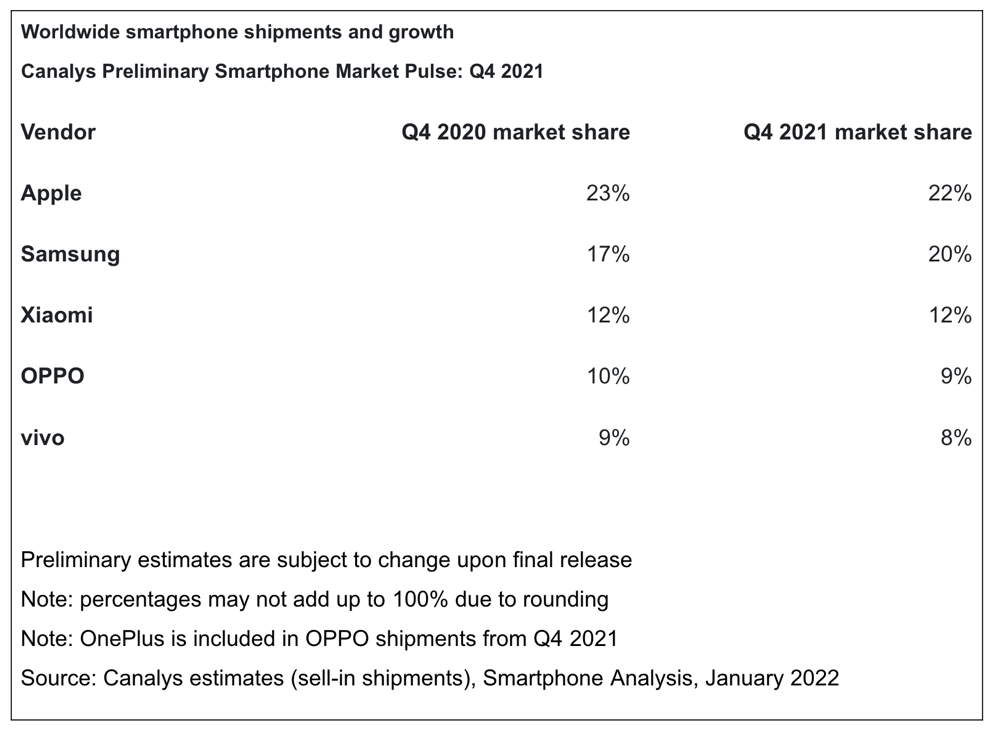Apple once again world’s top smartphone maker, says Canalys

While Apple may not have been able to product iPhones in the quantities it wanted to, it still took the top spot in the global smartphone market, with 22% of sales in Q4 21, Canalys states.
Apple takes the top slot
Apple accounted for 22% of worldwide smartphone shipments in Q4 2021, thanks to strong demand for the iPhone 13, the analyst said.
To put that into a little more context, Canalys also revealed that overall shipments for the quarter grew just 1%, as vendors faced supply chain problems and a resurgence in COVID-19 cases. Which means Apple’s smart supply chain management meant the company somehow managed to buck that trend.
Samsung didn’t do badly. It took #2 position and 20% share. Xiaomi sits in third place with a 12% share. OPPO (9%) and vivo (8%) also took position among the top five global smartphone vendors.
It was the iPhone 13 that done it
People really seemed to like iPhone 13. I think, in part, this was driven by such great experiences with iPhone 12, as this created the kind of word of mouth pester power that meant those in the market for an upgrade were pleased to choose iPhone 13.
Canalys Analyst Sanyam Chaurasia observed: “Apple is back at the top of the smartphone market after three quarters, driven by a stellar performance from the iPhone 13.”
“Apple saw unprecedented iPhone performance in Mainland China, with aggressive pricing for its flagship devices keeping the value proposition strong. Apple’s supply chain is starting to recover, but it was still forced to cut production in Q4 amid shortages of key components and could not make enough iPhones to meet demand. In prioritized markets, it maintained adequate delivery times, but in some markets its customers had to wait to get their hands on the latest iPhones.”
[Also read: Apple’s Mac sales grew twice as fast as PCs in 2021, Canalys]
Seeking to rebuild supply chains
“Supply chain disruption affected low-end vendors the most,” said Canalys VP Mobility Nicole Peng.
“Component manufacturers are eking out additional production, but it will take years for major foundries to significantly increase chip capacity. Smartphone brands are already innovating to make the most of their circumstances, tweaking device specs in response to available materials, approaching emerging chipmakers to secure new sources for ICs, focusing product lines on the best-selling models and staggering new product releases. These practices lend an advantage to larger brands, and they are set to stay for the short term, as bottlenecks will not ease until the second half of 2022.”
Here’s the graph:

Apple accounted for 22% of worldwide smartphone shipments in Q4 2021, thanks to strong demand for the iPhone 13
Please follow me on Twitter, or join me in the AppleHolic’s bar & grill and Apple Discussions groups on MeWe.




